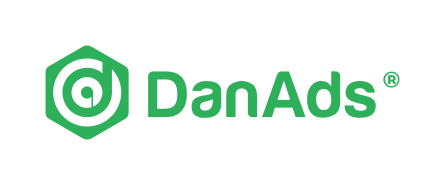For many publishers, it’s no secret that a few large, usually corporate accounts are responsible for the bulk of advertising revenue. This has long been the law of traditional advertising. So, it makes sense to focus efforts on managing and maintaining these accounts at the expense of smaller customers. When the value of each deal is lower, the cost to serve remains relatively static. The result is a diminishing ROI for publishers as their profits are quickly eaten up by costs.
However, neglecting long-tail ad buyers – SMEs – also has an opportunity cost.
Aggregated small deals = massive revenues
When thinking about SMEs, consider that a “small” business can have up to 500 employees. In other words, not every SME is your local corner shop or florist. Some SMEs are born-global scaleups with decent-sized marketing budgets, backed by venture capital, and motivated by high-growth strategies.
The U.S. Small Business Administration, for instance, recommends that businesses with revenues below $5 million allocate 8% of their revenues to marketing. And that suggestion is on the conservative side. Depending on the industry, level of competition, and strategy of the owners, the marketing and advertising budget could easily reach up to 20% of revenue.
To see the value of small deals aggregated, look no further than Facebook, one of the world’s biggest advertising platforms. Most of Facebook’s substantial ad revenue ($69.7 billion in 2019) comes from SMEs, rather than large corporate clients. Facebook boasts more than 8 million advertisers. However, the highest-spending 100 brands account for only about 6% of the platform’s ad revenue. In other words, SMEs are the driving force behind Facebook’s massive advertising business. So why aren’t other publishers cashing in?
Automation and streamlining are key
Small deals need to be aggregated efficiently to generate maximum returns. Think of it like a commercial fisherman using a trawler, rather than angling for individual herring. That means fewer touchpoints, faster turnaround times, and more flexibility.
There is a technical solution to the problem: self-serve advertising platforms. Much like Facebook and Google’s demand-side ad markets, self-serve platforms shift the workload from the publisher to the ad buyer. They also reduce turnaround time and lower the barriers to entry for potential advertisers. If anything, automation and streamlining free up more time for sales to focus on the big fish. Meanwhile, small deals are diligently collected en-masse by the self-serve platform, empowered by sales and marketing.
A point worth considering is that the SME segment doesn’t necessarily plan and create their campaigns during regular office hours when the publishers’ sales teams are available. Self-serve enables the publisher to offer 24/7 service and support.
Of course, adopting a self-serve platform doesn’t mean you should stop catering to key corporate accounts. How do you decide which deals to process manually and which can be handled by self-serve? One way to do this is to set a budget threshold. This way, you can split ad deals into managed accounts (anything over $10,000, for instance) and self-serve deals (any deals below that range).
Brand safety and editorial oversight
It’s undeniable that Facebook, Google, and Amazon are essential tools for most modern businesses, and a reasonable choice for SME advertising. However, Big Tech platforms present certain problems that are leading many marketers to look for alternative solutions.
A growing issue is brand safety – the need to protect the advertiser’s image and reputation from negative associations. In recent years, Big Tech platforms have been subject to increased scrutiny, including the infamous “Adpocalypse” of 2017 where major brands pulled their ads from YouTube as a reaction to content deemed contextually toxic.
YouTube has experienced at least three similar major incidents since then. And Facebook has received similar flak, in part for a perceived slowness to remove offensive or illegal content. In June 2020, more than 1000 companies boycotted Facebook as part of a campaign organized by activists, #StopHateForProfit.
Digital publishers are able to offer a more reliable standard of brand safety with more editorial oversight of their platforms. This can be important for SMEs as for corporations. In an age in which brand missteps can be instantly captured, curated, and communicated across the internet and social media, companies of all sizes are becoming more cognizant of the risks of where and how they advertise.
Self-serve advertising is a commercially effective model for platforms like YouTube and Facebook. However, the fact that they are built on user generated content makes it a sort of Wild West for advertisers. By contrast, publishers with control over the content they put out are able to leverage the scale benefits of self-serve without posing the same risks to brand safety. For publishers tired of blacklisting advertisers (a common issue with programmatic), self-serve offers ease of mind. That’s because ads are manually approved by the publisher, which is actually the only hands-on step of the process for publishers.
SME = big opportunity
Self-serve advertising is undoubtedly on the rise. Brands that have adopted the technology include traditional publishers like Hearst Magazines (Vanity Fair, Elle, GQ), respected newspapers (Bloomberg Media Group, The Atlantic), travel publishers (Tripadvisor, eDreams ODIGEO) and streaming platforms (Roku).
Some publishers may balk at the idea of automating their main source of revenue, and no wonder. But the most common approach is to start by funnelling small and medium deals through self-serve, rather than all deals from day one. In other words, it’s far from an either-or choice. Once fully incorporated within the business model, the threshold can be significantly increased.
Still, self-serve advertising is a fundamental game changer for digital marketing and it will take time for publishers to adjust to the new paradigm. With that said, SMEs have demonstrated both a willingness to spend and a desire to use self-serve to place their ads. As traditional publishing is being turned on its head, publishers can’t afford not to serve SMEs.
In the immortal words of Alec Baldwin in Glengarry Glen Ross: “they’re just sitting there, waiting to give you their money. Are you gonna take it?”






